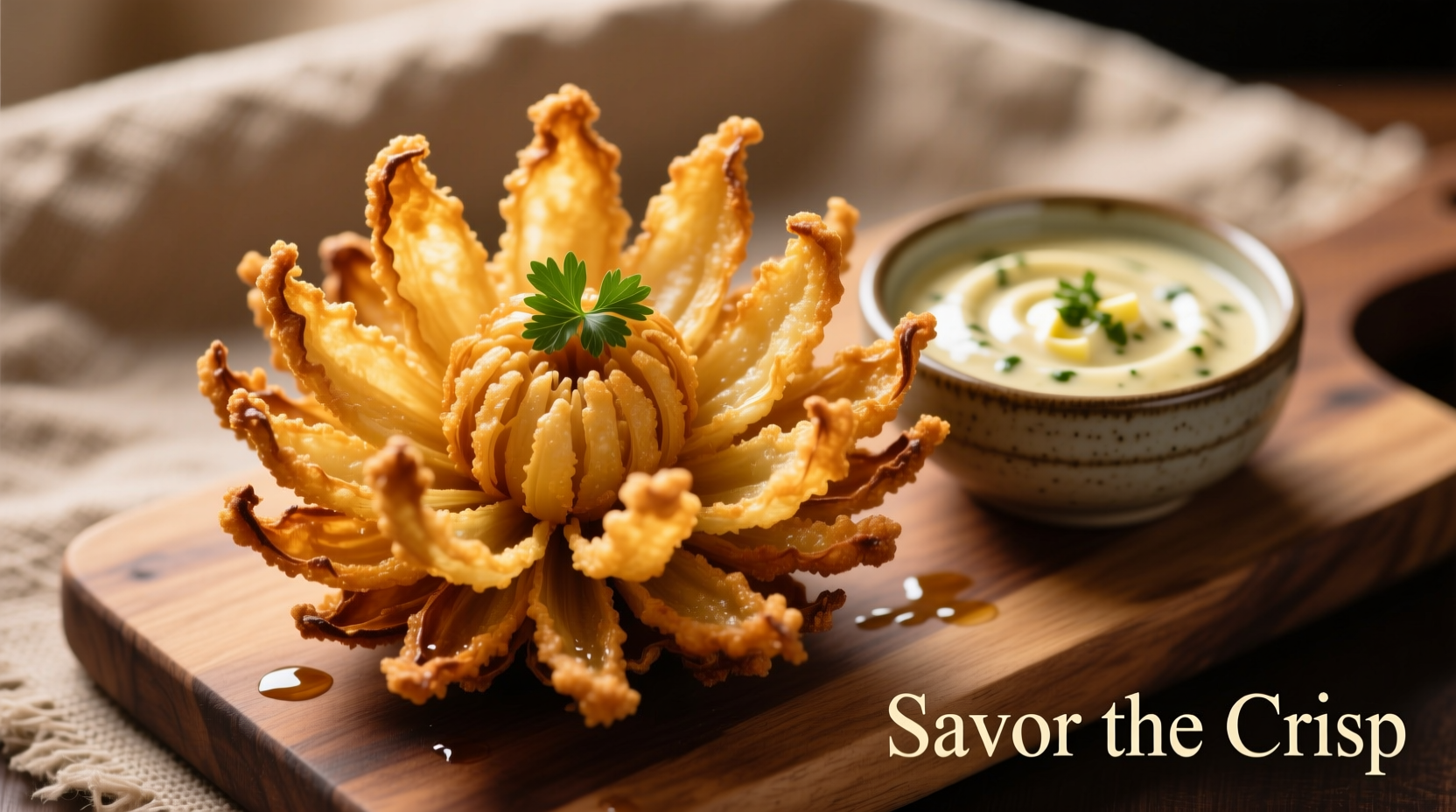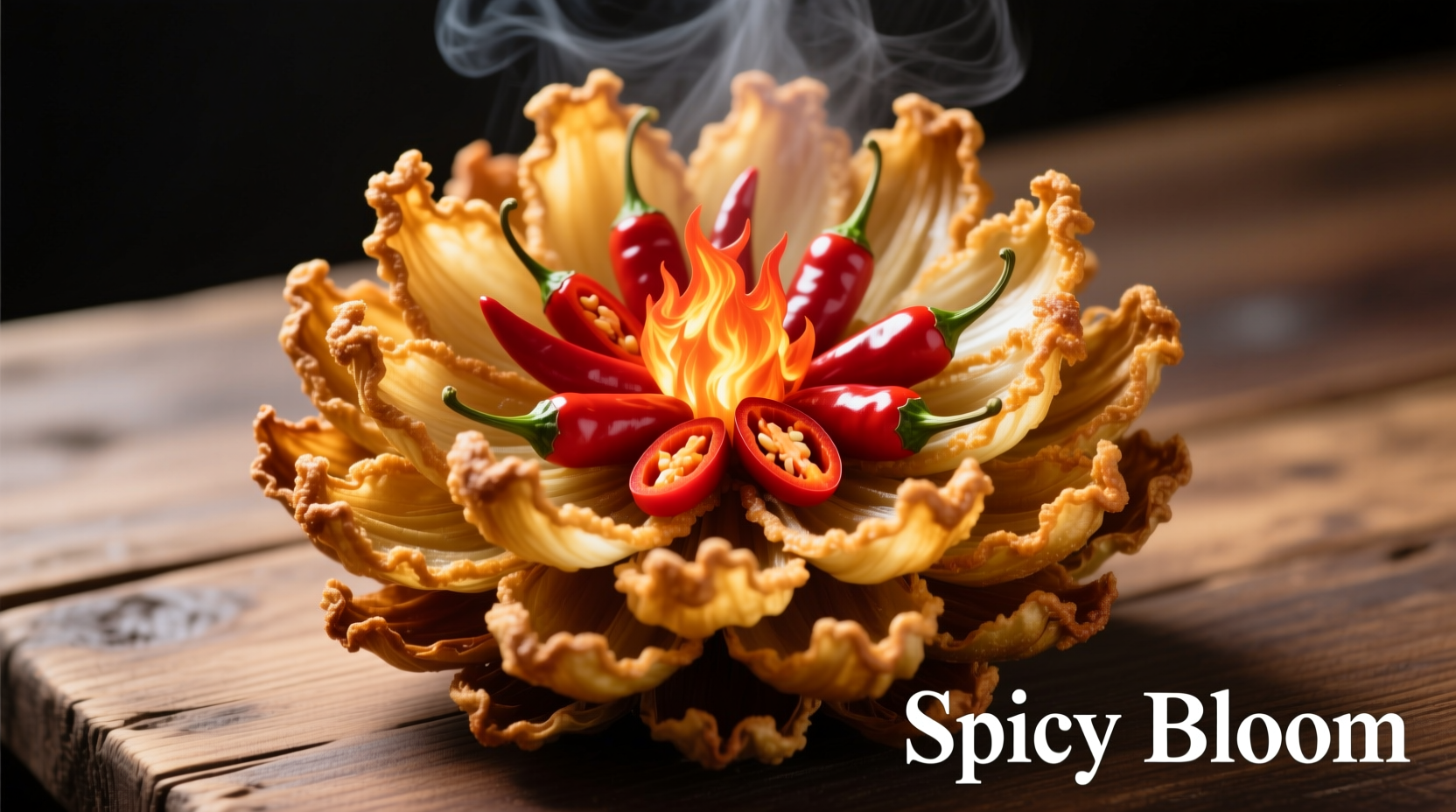When you order a Blooming Onion at Chili's, you're getting more than just fried food—you're experiencing a culinary innovation that changed American restaurant culture. This distinctive appetizer features a whole sweet onion meticulously sliced to create a blooming flower shape, dipped in a seasoned batter, deep-fried to perfection, and served with a signature spicy dipping sauce. Understanding what makes this dish special goes beyond the crunch—it's about appreciating the technique, history, and cultural impact that transformed a simple vegetable into a dining phenomenon.
The Origin Story: How a Simple Idea Became Iconic
Before the Blooming Onion became synonymous with Chili's, restaurant appetizers were largely conventional—think basic nachos or standard onion rings. Everything changed in 1990 when chef Mark Zappia, working at the original Chili's in Texas, had a breakthrough idea. Drawing inspiration from traditional Japanese ikebana flower arrangements, Zappia experimented with cutting techniques that would transform an ordinary onion into an edible work of art.
Evolution of the Blooming Onion (1990-Present)
- 1990: Chef Mark Zappia develops the Blooming Onion technique at Chili's original location in Texas
- 1991: Dish officially added to Chili's menu nationwide after successful regional testing
- 1993: Blooming Onion featured in national advertising campaign, becoming Chili's signature item
- 2000s: Dish inspires countless imitations across American casual dining establishments
- 2010: Chili's introduces updated recipe with improved batter consistency and sauce formulation
- 2020s: Blooming Onion remains one of the most ordered appetizers in American casual dining
What Makes It Different From Regular Onion Rings
The magic of the Blooming Onion lies in its preparation technique. Unlike standard onion rings which are sliced horizontally into separate rings, the Blooming Onion starts as a single whole onion. The chef makes precise vertical cuts from the top down, stopping before reaching the root end, creating interconnected segments that "bloom" when fried. This technique requires significant skill—too shallow and the petals won't separate properly; too deep and the onion falls apart.
| Feature | Blooming Onion | Traditional Onion Rings |
|---|---|---|
| Preparation Method | Whole onion cut vertically into connected segments | Horizontal slices creating separate rings |
| Serving Presentation | Single dramatic blossom shape | Multiple separate rings |
| Batter Application | Covers entire blossom structure | Covers individual rings |
| Dipping Sauce | Signature spicy cocktail sauce | Various standard sauces |
Nutritional Profile: What You're Really Consuming
While undeniably delicious, the Blooming Onion represents a substantial indulgence. According to USDA FoodData Central and restaurant nutrition information, a standard restaurant-sized Blooming Onion contains significantly more calories and fat than many patrons realize. The deep-frying process and generous batter application transform what begins as a relatively low-calorie vegetable into a calorie-dense appetizer.

Practical Enjoyment: Making the Most of This Indulgence
For those who enjoy the Blooming Onion but want to be mindful of consumption, several practical approaches can enhance your experience:
- Share strategically: Order as a shared appetizer rather than individual portions to reduce personal consumption
- Balance your meal: Follow with a protein-focused entree and vegetable side to create a more balanced dining experience
- Consider timing: Enjoy as an occasional treat rather than a regular menu item for better dietary management
- Portion awareness: Recognize that restaurant portions typically exceed single-serving sizes
Why It Endured: Cultural Impact Beyond the Plate
The Blooming Onion's longevity stems from more than just taste—it represents a shift in American dining expectations. Before its introduction, few casual dining establishments offered signature, visually distinctive appetizers. The Blooming Onion created what food historians call "the wow factor" in mainstream dining—a dish that customers would specifically seek out and remember. According to a 2022 National Restaurant Association survey, 78% of American diners can identify the Blooming Onion by name, demonstrating its cultural penetration.
Home Preparation Challenges and Considerations
While many attempt to recreate the Blooming Onion at home, several factors make authentic replication challenging. The precise cutting technique requires significant practice to master without damaging the onion structure. Commercial kitchens use specialized equipment for consistent batter application and temperature-controlled deep fryers that maintain optimal oil conditions throughout service. Home cooks often struggle with oil temperature management, leading to either undercooked batter or overly greasy results.
Responsible Indulgence: Finding Balance
Enjoying restaurant specialties like the Blooming Onion can be part of a balanced lifestyle when approached mindfully. Registered dietitians recommend considering such dishes as occasional treats rather than regular menu items. The American Heart Association notes that occasional indulgence in higher-calorie restaurant foods can be accommodated within a healthy eating pattern when balanced with nutrient-dense choices throughout the week.











 浙公网安备
33010002000092号
浙公网安备
33010002000092号 浙B2-20120091-4
浙B2-20120091-4